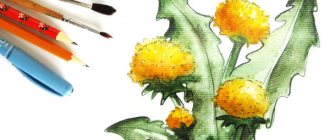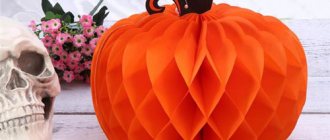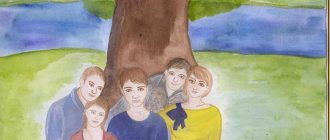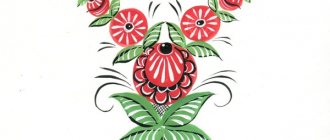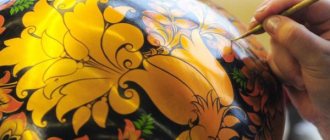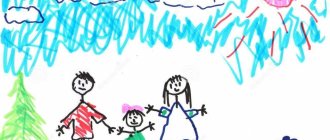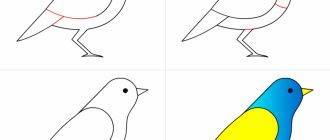MAGAZINE Preschooler.RF
Summary of an integrated lesson in the senior group “Visiting a squirrel” using an interactive whiteboardDEPARTMENT OF EDUCATION OF THE ADMINISTRATION OF THE CITY OF EKATERINBURG
Municipal budgetary preschool educational institution - general developmental kindergarten with priority implementation of activities on cognitive and speech development of pupils No. 121 MBDOU - kindergarten No. 121
Compiled by teacher of MBDOU No. 121 Romanova Natalya Aleksandrovna
Goal: to develop children’s ability to draw an animal according to a diagram, to consolidate their knowledge about the appearance and habits of squirrels in the forest (reserves).
Integration of educational areas: cognitive development, socio-communicative development, artistic and aesthetic development.
Software tasks:
Educational:
- Introduce children to the work of illustrator E. I. Charushin.
- To consolidate children's knowledge about the external structure of squirrels and their habitat.
- Teach children to draw first with a simple pencil according to a diagram, gradually conveying the shape of the animal.
Educational:
- Foster interest in understanding the natural world of the reserve.
- Enrich your vocabulary with possessive adjectives: squirrel.
- Foster a humane attitude towards animals.
Educational:
- Develop artistic taste, aesthetic feelings, imagination
- Develop the ability to convey the image of an animal according to a scheme.
- Unleash the creative potential of children.
Preliminary work
- View the multimedia presentation “Squirrels! What are they like ?
- Looking at illustrations on the topic: “Animals are preparing for winter”
- Conducting didactic games: “Whose house” , “Pick up a fur coat” , “Who sleeps in winter and who doesn’t” .
- Reading the works of M. Prishvin “Squirrel Memory” , learning by heart the nursery rhyme “A squirrel is sitting on a cart...” .
Planned results:
- The child knows about the squirrel’s habitat and its importance in the eco-system.
I Organizational part.
Motivation
Teacher: (makes a riddle)
The tail is a fluffy arch, do you know this animal? Sharp-toothed, dark-eyed, loves to climb trees.
(Squirrel)
Slide 2: (A squirrel appears on the screen)
Educator. - That's right guys! I would like to introduce you to the writer and artist Evgeny Ivanovich Charushin.
Slide 3: The teacher tells the children about the writer E.I. Charushin.
As a child, the little boy Zhenya and his mother treated animals, drew them, and observed them. Spent a lot of time outdoors with my dad. He especially liked animal children. The mysterious life of the animal world was inherent in the little boy Zhenya from childhood.
Slide 4: Guys, look at these are just a few stories that E.I. wrote. Charushin
Slide 5: Children, look at how Evgeniy Ivanovich painted a squirrel in his works. The teacher reads a poem by Vladimir Livshits about a squirrel.
The bunny is not used to working, the Badger is too lazy to work, only the housewife squirrel works all day long.
She scurries through the hazel trees, dexterous, agile, and collects nuts, large, selected ones.
He sits down, fluffs up his tail, and quickly peels off the bump. He jumps down, picks a fungus - Prepares for future use.
Collects soft moss - It's not bad for bedding. I've worked hard, I'm tired, I've finished my working day,
But there is a lot of goodness in the housewife's pantry. When the cold comes - There is a house and food.
The squirrel will jump into the hollow, It’s cozy and warm there, Softly, like in bed... Let the snowstorms blow!
Slide 6: Guys, let's look at the squirrel. What is she like? Describe it.
(children describe. Teacher summarizes and supplements):
— The squirrel is very small, about the size of a palm. She has ears with tassels, paws with claws, and is fluffy. The squirrel quickly jumps from branch to branch, and controls its tail like a rudder. When a squirrel sleeps, it curls up and covers itself with its tail like a blanket. The squirrel is a good housewife. A characteristic feature of many squirrels is their ability to store nuts for the winter, and they begin to do this in the summer. At the same time, some of them bury nuts in the ground, while others hide their reserves in tree hollows. But squirrels sometimes forget what and where they hid and the nuts sprout, thus, without meaning to, squirrels actively participate in the renewal of forests.
Slide 7: - Squirrels are preparing their homes for winter. Usually a squirrel has not one house, but several for sleeping, for wintering, and for breeding squirrels. A squirrel's house is called a “hollow”. But if there is no hollow, then the squirrel builds a nest for itself. The squirrel's winter coat is silvery, similar to snow. And in the summer - red.
Physical education moment
A squirrel is bored in a hollow, but it’s more fun on the ground. (I.p. - o.s. stretch, clap overhead.)
Jump-jump, jump-jump - she ran down the trunk in an instant. (Jumping around yourself with your hands in front (imitating the movements of a squirrel.)
I ran along the forest path into the dense forest. (Running in place)
And the fox is coming towards her, hide, little squirrel, quickly! (Sit down, covering your head with your hands.)
II. Main part.
Slide 8: Guys, let's see what shape the squirrel's head, body, and tail have? (children's answers)
Educator: - We will draw a squirrel with a simple pencil step by step: according to the diagram.
- We take a pencil and mark with ovals the places where the head, tail, paws and body will be.
- Draw the ears and tummy of the squirrel.
- Color the outlines of the squirrel.
Children draw a squirrel with a simple pencil, based on the diagram. Calm music sounds.
(Individual approach of the teacher to children).
Finger gymnastics:
A squirrel sits on a cart, (Claps palms and hits each other with fists alternately.)
She sells nuts.
To the fox - sister, (Bend one finger at a time, starting with the thumb.)
Sparrow, titmouse,
To the fat-fifted bear,
Bunny with a mustache.
To whom in a scarf, (Rhythmic clapping of palms and fist bumps).
Who cares,
Who cares?
Educator: - Now let’s dress our little squirrel in a beautiful red fur coat.
(Children color the squirrel with wax crayons, tracing the outline of a simple pencil with black wax crayon.)
Summarizing:
Educator: guys, let's remember what we know about the squirrel. Where she lives? What does it look like? What does it eat?
(Children's answers)
Educator: Children, why do you think a squirrel has such a fluffy tail?
(Children's answers.)
Educator: what benefits does a squirrel bring to nature?
(Children's answers).
Educator: guys, what writer-artist did we meet today?
Children: Zh.I. Charushin. He wrote about the animal world.
Slide 9: Educator: Well done! Let's see how wonderful the squirrels turned out. (Children look at each other’s drawings). I suggest collecting all the drawings in a beautiful box. I will send the squirrel these wonderful, beautiful friends you drew. Now the squirrel will not be lonely. (Children put the drawings in a box. A song about a squirrel sounds).
| Next > |
Preview:
Municipal Budgetary Preschool Educational Institution
"Kindergarten No. 10" in Engels
Summary of direct educational activities
on artistic development. Drawing in the senior group
Educator: Yalalova Zoya Anatolyevna
Goal: To consolidate the skills of drawing the animal squirrel,
Learn to get orange by mixing two colors: red and yellow. To develop children’s ability to depict a new image of an animal - a squirrel - using familiar drawing methods: the method of composing an image from individual parts - circles, ovals, triangles; make a pencil sketch of the intended drawing.
Develop creative imagination in conveying the characteristic features of the appearance of a squirrel, using various visual means to obtain fluffy fur: drawing with the tip of a brush
Cultivate a kind attitude towards animals. Develop children’s social skills, the ability to negotiate while completing a task, and ensure conflict-free behavior.
Ensure a favorable microclimate throughout the entire lesson and rational use of dynamic poses and satisfaction in motor activity.
Materials for the lesson:
Sheets of A3 paper and small cards measuring 5x5cm;
Watercolor and gouache paints, palettes;
Various brushes – squirrel No. 8, kolinsky, bristle;
Napkins for blotting brushes;
Pictures and photo illustrations depicting wild animals in static poses and movement.
I. Introductory part
Didactic game to consolidate previously covered material “Make the Beast”
The teacher invites children to remember the animals of the Saratov region, which they can already draw (wolf, hare and fox).
The teacher suggests breaking up into three teams and using a flannelgraph to make up an animal from the parts and make comments about the shape of the body, ears, head, coat color, etc.
Creating difficulty. Problem situation:
The teacher shows a soft toy squirrel.
Reports that it is the squirrel's birthday. She needs to make invitation cards for the animals; each invitation should have a portrait of a squirrel. Offers to help the children with the squirrel (But the children cannot draw it yet.) Asks about the color of its fur. Find the required paint on the palette. Do you know how you can get it? Do you know how to draw it? Do you want me to teach you?
Children stand around the teacher. They independently break into three teams and determine which animal they want to draw on the flannelgraph and carry out the construction and make explanations.
II. Main part
Presentation of new material
Showing paint mixing
The teacher shows how to mix two colors to get orange.
The teacher shows a diagram of drawing a squirrel.
Finger gymnastics “Squirrel”
Consolidation of learned information in new conditions
The teacher encourages you to complete the task
III. Final part. Reflection.
Children are invited to choose their favorite works and comment
The teacher asks the children where and how in the future they might need the ability to mix colors.
The children sit down at the tables and see that there is no orange paint. Then they take palettes and repeat after the teacher the process of mixing two colors: red and yellow. Evaluate the result.
Children use their fingers to imitate the movement of a squirrel: jumping, wagging its tail.
They draw a squirrel, commenting on their actions.
Children choose the best works (invitations). Give reasons for your choice.
Source
Summary of educational activities on drawing “Squirrel” in the senior group
Tatiana Krivonogova
Summary of educational activities on drawing “Squirrel” in the senior group
Program content:
1. To consolidate and expand children’s knowledge about protein (appearance, nutrition, behavioral characteristics to changes in the environment).
2. Develop the ability to draw a squirrel. Learn to convey in a drawing the distinctive features of a squirrel’s appearance.
3. Improve visual skills and abilities, develop artistic and creative abilities;
4. Learn to correctly position an image on a sheet of paper;
5. Develop accuracy and neatness when working. The ability to bring something started to completion. Foster a love of nature and respect for animals.
Materials: Sheets of paper 1/2 A 4, simple pencils, erasers, wax crayons, photo illustrations or pictures of a squirrel, poster “Wild Animals of the Forest”, presentation “Squirrel”.
Progress of educational activities:
1. Organizational moment. Conversation with children.
The teacher hangs up a poster “Wild Animals of the Forest.”
Conversation about wild animals with children (children name forest animals, look at illustrations).
The teacher asks a riddle:
I walk around in a fluffy fur coat,
I live in a dense forest.
In a hollow on an old oak tree
I'm gnawing nuts.
Children: Belka
Educator: Today we will learn to draw a squirrel. But first, I suggest you see how a squirrel lives in the forest (view the presentation).
The presentation is accompanied by a story from the teacher with questions for the children. (What is the character of a squirrel? (fast, nimble, dexterous, nimble, nimble, etc.) How does a squirrel move through the forest? Why are its hind legs longer than its front ones? Why does a squirrel have such a big tail? How does it help it in flight? What does a squirrel eat? (in summer, in winter? What is the squirrel’s body covered with? Is the squirrel’s fur always the same color? Why does its color change)
2. Drawing a squirrel with simple pencils. Showing the teacher the sequence of drawing a squirrel.
Educator: Where should we start working? Where is the squirrel located on a piece of paper? What shape is the body and ears?
Children begin to work on a sketch using simple pencils. The teacher controls the children's work.
After sketching the drawing in pencil, a physical education session is held:
The squirrel jumped and jumped. (Jumping in place)
By winter, the pantries were filled: (slopes)
Here are the nuts (turn)
Here is a mushroom, (turn)
For sons and daughters. (Steps in place)
Children's independent activity is decorating squirrels with wax crayons. Drawing a fir branch, nut, snow at the request of the children.
3. Bottom line. Compiling a story based on drawings, analyzing the work of comrades.
Children look at the drawings, tell what they liked, note the appearance and what kind of character the squirrel turned out to be.
Educator:
-Who did we draw today? (To Belko).
— What is the squirrel doing in the picture? (The squirrel sits on a spruce branch)
- Well done boys!
Exhibition of works.
